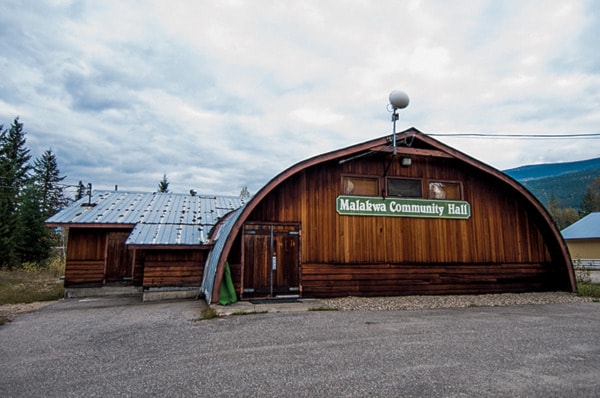Malakwa residents may not be united in what to do about their community hall, but there’s greater co-operation to get something done.
On Oct. 24, the Malakwa Community Centre Association held its monthly general board meeting. Typically, these are attended by about 10 people. But association president Gord Hynek said there was at least six times that number this time around. And though the association had a number of important items to deal with on the evening’s agenda, the majority of the crowd showed up for one thing: to discuss the fate of the hall in which they were gathered.
In August, the association received word by their insurer that their liability coverage for the facility would no longer cover public gatherings at times when the roof might collapse under heavy loads. They also found out all coverage for the building would be eliminated as of June 15.
This news stems from an engineer’s study the insurer completed on the building when the association attempted to see if there might be coverage for the leaking roof. Hynek says an additional investigation was done by a private builder brought in by the association. He and the builder found water damage in the roof, including delaminating support beams and mouldy gyprock in the hall’s addition where the kitchen and bathrooms are located.
“The meeting was trying to demonstrate that we really are at the beginning of this, we just got all this information in the summer and nothing is firmed up,” says Hynek. “We’re inquiring into grants because we have to have money to do whatever we decide to do. Whether or not we look at renovating or a complete new building, we’re just beginning that process and we need more help. It’s overwhelming; it’s too much for just a few of us.”
Hynek said that as the meeting progressed, more hands would rise to vote on matters, indicating the association’s membership was steadily growing. By the end of the night, it had grown by 50. This, for Hynek, was a thrill, as was the way the crowd came to understand all the work the volunteer association is responsible for.
“By the end of the night… instead of people complaining about the people in charge of the community association, we started getting several thank yous and people officially standing up and saying, ‘I really thank you for all the volunteer work you’re doing. By the end of the night, they were onboard, so it’s a good ending, but it’s just another step.”
To address the matter of the community hall, Hynek said a 20-member committee was formed.
“There’s going to be negotiations all through,” said Hynek. “People have different ideas about what should happen.”
He said that during discussion about the hall, there were several people who challenged the engineering report, suggesting a second opinion is needed. Despite the degree of the damage he has seen in the building, Hynek is amenable to the notion of another pair of eyes doing an inspection.
“Some other people made some comments who are in the building industry that engineers who work for insurance companies are a different kind of engineer than those who work in the building industry, and I never even thought of that,” said Hynek. “So it may be a good point, maybe we should, maybe there are some ideas a structural engineer has that, in the end, will save the building and wouldn’t cost near as much. So that is now a possibility.”
However, Hynek emphasized that what avenues are pursued will depend on who shows up for future meetings.
“That will come out of the building committee, we’ll discuss that in more detail… if people don’t come in and push for that, I don’t know, we’ll just see,” said Hynek.
Regardless of what happens with the building, Hynek has said the structure will have to meet current building codes to be properly insured.
“It definitely would be less of an ongoing worry to just have a new building, not to have to try and fix it,” said Hynek. “It’s going to be very expensive as well, even just fixing it, because so much has to be taken out. And even though the structural report didn’t deal with the mould… the mould is also an issue.”
